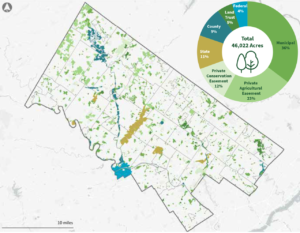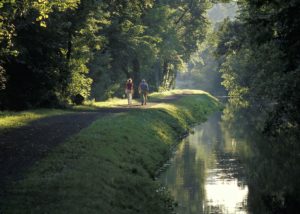
Montgomery County protected open space by ownership type. Source: Montgomery County Return on Environment report
Protected open spaces like parks and trails provide lots of value. They give us places to walk and enjoy the outdoors. They create homes for wildlife. They make communities more attractive places to live.
- $48 million in additional property tax revenue due to higher home values near protected land
- $160 million in direct economic impact through tourism spending and goods produced on protected land
- $31 million through environmental services like natural water filtration
- $219 million in annual outdoor recreation benefits
